Once a hidden treasure of Latin American and Asian cuisines, chayote is quickly becoming a favorite in American kitchens and backyard gardens. With its mild flavor, crisp texture, and impressive health benefits, this versatile green squash—also known as vegetable pear or mirliton—is making its way onto grocery shelves, restaurant menus, and even farm-to-table recipes across the United States.
Whether you love to cook healthy meals, grow your own vegetables, or explore new global foods, chayote offers the perfect blend of nutrition, versatility, and sustainability. In this detailed guide, we’ll explore everything you need to know about this underappreciated superfood—from its origins and health benefits to growing tips and creative American-style recipes that make the most of it.
1. What Is Chayote?
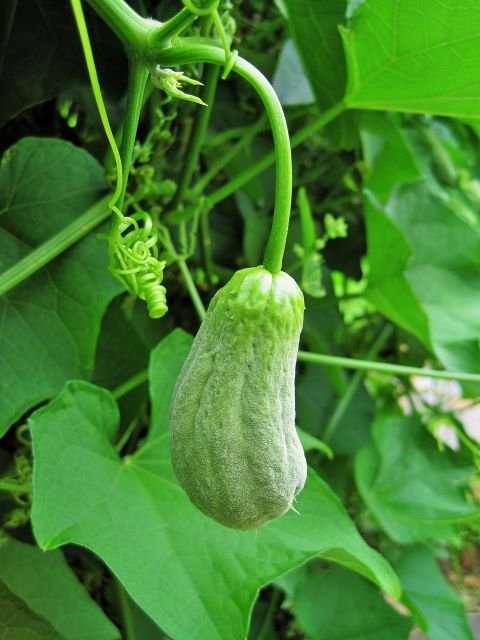
Chayote (Sechium edule) is a type of squash that belongs to the gourd family, along with cucumbers, pumpkins, and melons. Native to Central America, it’s been cultivated for centuries in Mexico, Guatemala, and surrounding regions, and is now grown in warm parts of the United States such as Florida, California, Texas, and Louisiana.
The fruit has a light green, wrinkled pear shape and a crisp texture similar to a cucumber or green apple. Unlike other squashes, every part of the chayote plant is edible—from the fruit and leaves to the shoots and even the seed inside.
Commonly known by different names around the world—mirliton in the southern U.S., chocho in Jamaica, and sayote in the Philippines—this humble vegetable is prized for its mild, refreshing taste and ability to blend seamlessly with a variety of cuisines.
2. Nutritional Benefits: Why Chayote Is a Superfood
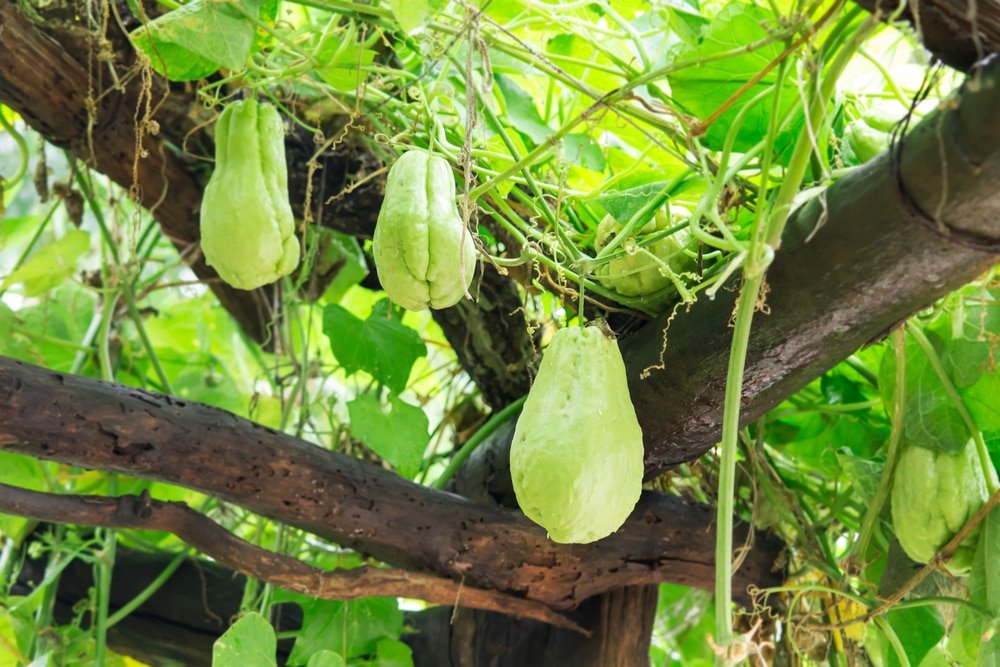
Chayote isn’t just delicious—it’s packed with vitamins, minerals, and fiber, making it one of the healthiest and most versatile vegetables you can add to your diet.
a. Low in Calories, High in Nutrients
One cup of chayote contains only 25 calories but delivers an impressive array of nutrients:
- Vitamin C: Boosts immunity and promotes healthy skin
- Vitamin B9 (Folate): Essential for cell repair and growth
- Fiber: Aids digestion and helps regulate blood sugar
- Potassium: Balances blood pressure and supports heart health
- Manganese and Zinc: Support metabolism and immune function
b. Supports Heart Health
Chayote’s low sodium and high potassium levels make it excellent for maintaining healthy blood pressure and reducing the risk of cardiovascular disease.
c. Great for Weight Management
Its high water content and fiber help you feel full longer, making it an ideal addition to weight-loss or low-carb diets like keto or paleo.
d. Promotes Digestive Health
Chayote is gentle on the stomach and promotes healthy digestion, helping relieve bloating and constipation naturally.
e. Anti-Aging and Antioxidant Properties
Rich in antioxidants like vitamin C and quercetin, chayote helps fight free radicals, support glowing skin, and slow down signs of aging.
In short, chayote offers a powerful nutritional profile that complements modern American wellness trends focused on whole, plant-based foods.
3. Growing Chayote in American Gardens
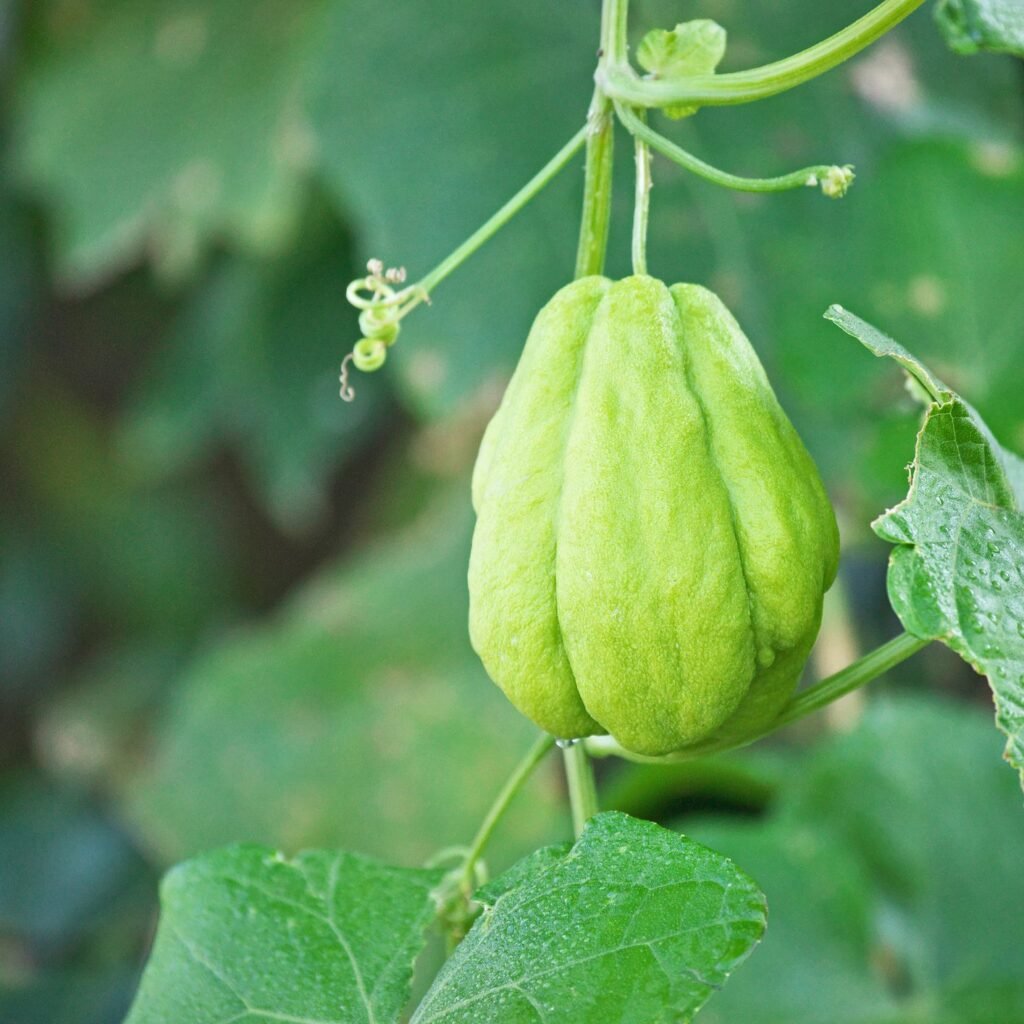
Chayote is an excellent choice for home gardeners—easy to grow, high-yielding, and eco-friendly. Its fast-growing vine provides not only food but also lush greenery that can shade patios or trellises beautifully.
a. Climate and Soil
Chayote thrives in warm, frost-free climates, ideally in USDA zones 8–11. States like Florida, Texas, Hawaii, and southern California offer perfect conditions.
- Temperature: 65°F–85°F
- Sunlight: Full sun or partial shade
- Soil: Loamy, well-drained soil rich in organic matter
- pH Level: Slightly acidic to neutral (6.0–7.0)
b. How to Plant Chayote
One of the most interesting aspects of chayote is that you plant it whole, like an avocado pit:
- Choose a mature, unblemished chayote fruit.
- Place it on its side in a pot or directly in the soil with the stem end facing down.
- Cover halfway with soil and keep moist.
- After a few weeks, a vine will sprout from the top.
Provide a strong trellis or fence for it to climb—chayote vines can grow up to 30 feet long!
c. Watering and Fertilization
Keep the soil consistently moist but not soggy. Fertilize monthly with a balanced organic fertilizer to encourage vigorous growth and fruiting.
d. Harvesting
Chayote fruits are typically ready 4–6 months after planting. Harvest when they’re light green, about 4–6 inches long, and still tender. The younger the fruit, the crisper and milder the flavor.
e. Sustainability Bonus
Like other members of the squash family, chayote is a low-maintenance, high-yield vegetable that produces abundantly with minimal care—making it perfect for eco-conscious American gardeners looking to grow food sustainably.
4. How to Cook Chayote: American and Global Inspirations
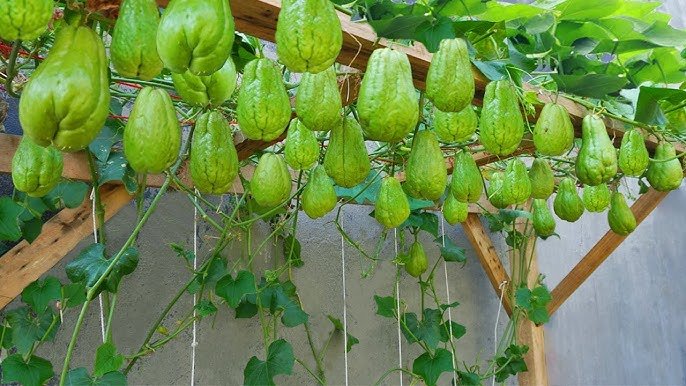
Chayote’s crisp, mild flavor makes it one of the most adaptable vegetables in the kitchen. It can be eaten raw, steamed, stir-fried, roasted, or even baked into casseroles. Its versatility has made it a hit among chefs experimenting with fusion cuisine.
a. Raw and Fresh
- Chayote Slaw: Shred it and toss with carrots, lime juice, and olive oil for a refreshing slaw.
- Chayote Salad: Combine thinly sliced chayote with avocado, cherry tomatoes, and vinaigrette for a crunchy salad.
b. Cooked Dishes
- Sauteed Chayote with Garlic and Herbs: A quick side dish that complements grilled meats or fish.
- Chayote Stir-Fry: Pair with bell peppers, soy sauce, and tofu for a healthy weeknight meal.
- Stuffed Chayote: Fill halved chayotes with breadcrumbs, cheese, and herbs, then bake until golden—a favorite in Louisiana Creole cooking.
- Chayote Soup: Simmer diced chayote with onions, celery, and vegetable broth for a creamy, comforting soup.
c. Southern and Latin Twists
- Mirliton Casserole (Louisiana Style): A beloved Southern dish featuring chayote, shrimp, and breadcrumbs baked with spices.
- Mexican Chayote with Lime and Chili: Boil or steam the fruit, then top with butter, chili powder, and a squeeze of lime.
d. Sweet Treats
In the Philippines and Latin America, chayote is used in desserts and jams due to its subtle sweetness. Try blending it into smoothies or baking it into quick breads for a nutrient boost.
Chayote’s mild flavor allows it to take on the taste of any dish, making it a wonderful ingredient for both traditional recipes and creative modern meals.
5. Chayote in Modern American Wellness and Diet Trends
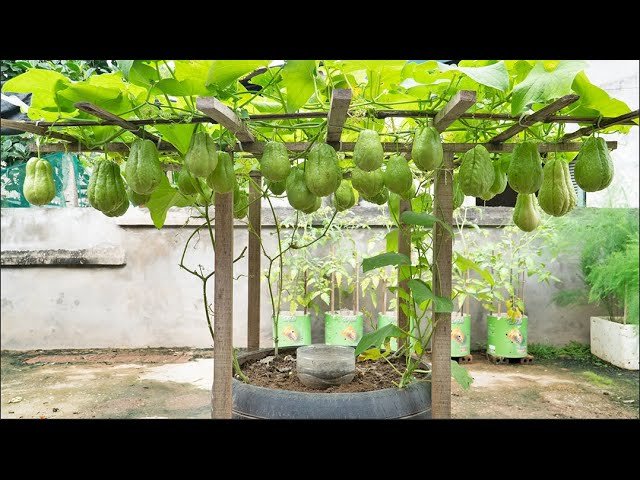
As Americans become more interested in whole foods, plant-based diets, and low-calorie eating, chayote has found its place among trending superfoods.
Here’s why it’s gaining popularity:
- Keto and Low-Carb Friendly: With only 3 grams of carbohydrates per serving, chayote is ideal for keto and diabetic diets.
- Vegan and Vegetarian Versatility: It’s a great base for plant-based soups, stews, and stir-fries.
- Clean Eating Movement: Chayote’s natural freshness and minimal processing align perfectly with the clean-eating lifestyle.
- Cultural Fusion Cuisine: Its adaptability allows chefs to blend Latin, Asian, and Southern flavors into one wholesome ingredient.
In many U.S. health stores, chayote juice and pickles are also gaining traction as detox-friendly options rich in antioxidants and hydration.
6. Health Benefits Backed by Research
Modern science is confirming what traditional medicine in Central America and Asia has long believed: chayote offers numerous therapeutic benefits.
a. Regulates Blood Sugar
Studies suggest that compounds in chayote can improve insulin sensitivity, making it beneficial for those managing diabetes.
b. Supports Weight Loss
Low in calories and high in water and fiber, it helps reduce hunger while providing essential nutrients.
c. Improves Digestion
The natural fiber in chayote promotes healthy bowel movement and supports beneficial gut bacteria.
d. Strengthens Bones and Joints
Its minerals—especially magnesium, zinc, and calcium—contribute to bone density and joint flexibility.
e. Boosts Immune Function
The high vitamin C content strengthens the immune system and protects against seasonal infections.
f. Hydrates Naturally
Because chayote is nearly 90% water, it helps keep the body hydrated and supports glowing skin and energy levels.
This balance of nutrition, hydration, and natural healing makes chayote an excellent food for holistic wellness.
7. Chayote in American Markets and Home Kitchens
Chayote is now easier than ever to find in the U.S. You can buy it at:
- Farmers’ markets (especially in southern and western states)
- Asian, Latin, and Caribbean grocery stores
- Major supermarket chains like Walmart, H-E-B, and Whole Foods
In the culinary world, chayote is being reimagined in American fusion cuisine—appearing in tacos, power bowls, and roasted vegetable platters. It’s even being pickled or spiralized as a low-carb noodle alternative, perfect for health-conscious eaters.
8. Final Thoughts: Chayote—America’s Next Green Favorite
With its refreshing taste, nutrient-rich profile, and easy growth habits, chayote is on its way to becoming a staple in American kitchens and gardens. It’s sustainable, delicious, and endlessly versatile—a vegetable that truly checks every box for modern lifestyles.
Whether you’re a gardener looking for a rewarding crop, a home cook seeking new flavors, or a health enthusiast exploring clean, plant-based foods, chayote is the perfect ingredient to try.
From its Latin roots to American tables, chayote embodies the beauty of global food traditions and the growing appreciation for nature’s green gifts.
So next time you see this pale green gem at your local market, don’t pass it by—bring it home, slice it up, and discover why chayote is the next big star in America’s superfood scene.
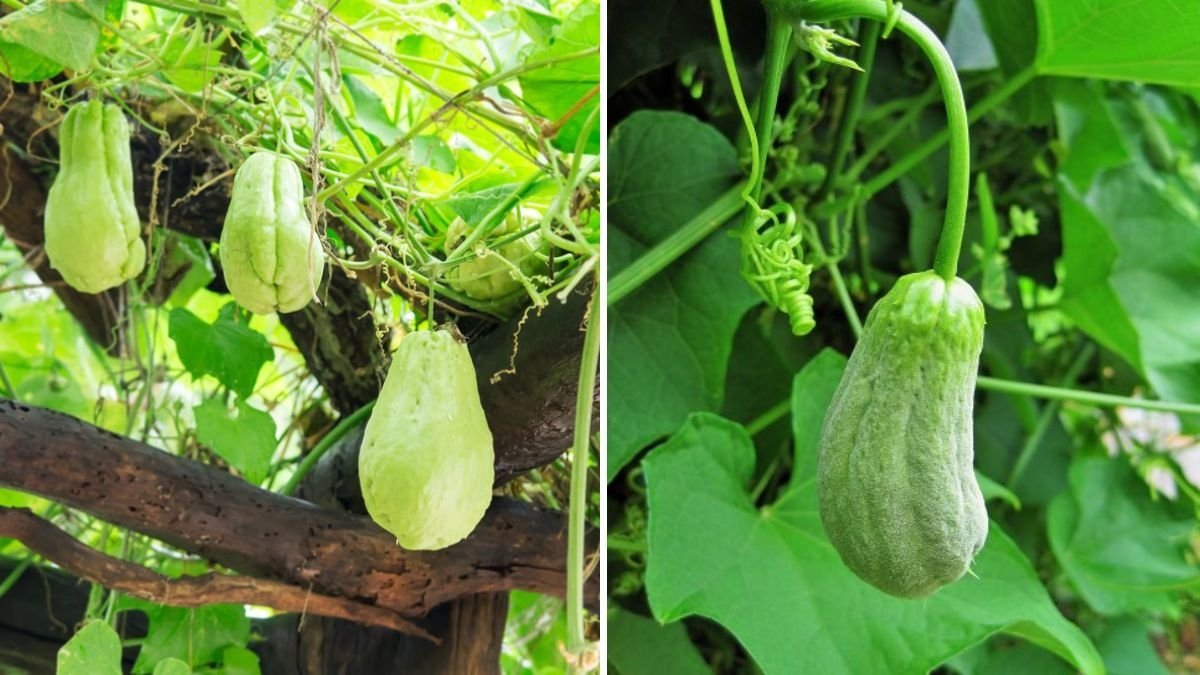





Leave A Comment